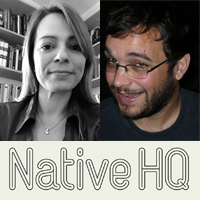
Rydym yn dal i hudo gan y broses o adeiladu cwmni, pum mlynedd ers i ni ddechrau.
Mae adeiladu busnes bach yn broses gymhleth a mentrus ac mae sawl cwestiwn. Un maes allweddol yw twf eich tîm: pryd ydych chi’n ehangu neu dyfu eich tîm, sut ydych chi’n dod o hyd i’r bobl iawn a pha sgiliau neu brofiadau dylech chi ddatblygu? Eleni yn NativeHQ rydym newydd ddechrau ein chweched flwyddyn ac yn ddiweddar penderfynodd i dyfu ein tîm.
Mae llawer o fodelau a chanllawiau ar gyfer tyfu y tîm mewn busnes bach. Mae yna hefyd nifer o ragdybiaethau y dylid eu cwestiynu yn rheolaidd. Ni fydd unrhyw fodel neu ddull yn addas i bob busnes, ond yr hyn sy’n hollbwysig yw beth sy’n addas i’ch gwerthoedd a diwylliant ar hyn o bryd. Rydym yn gobeithio, trwy rannu ein model o dwf tîm rydym yn dechrau yn y flwyddyn hon, efallai y byddwch yn codi rhai syniadau defnyddiol.
Mae’r model yr ydym bob amser wedi defnyddio yn NativeHQ yn un sy’n dechrau gyda chydweithio. Fel partneriaid (Carl Morris a Tom Beardshaw), rydym bob amser wedi cydweithredu gyda rhwydwaith o bobl ar sail ad hoc. Mae’r perthnasoedd hyn wedi cefnogi ein gwaith ac yn ein herio i feddwl a gweithio’n wahanol gyda chyfryngau cymdeithasol a chleientiaid. Rydym yn penderfynu cymryd y cam nesaf ac yn ffurfioli hyn trwy benodi dau gydweithredwr i ymuno â’n tîm yn ffurfiol.
Perthynasau cyswllt fel model ar gyfer twf
Gall y model cydweithredwr ar gyfer tyfu busnes cael ei adeiladu ar nifer o egwyddorion gwaith. Mae anghenion prosiect yn ei arwain, gyda strwythurau agored, cytundebau gweithio hyblyg, ac yn canolbwyntio ar gyfathrebu parhaus a chynydd mewn perthnasau ymhlith cydweithwyr.
- Anghenion prosiect: Mae pob cydweithiwr yn berson yr ydym yn cydweithio â hwy ar sail prosiect-wrth-brosiect. Mae hyn yn dibynnu ar anghenion y prosiect, y cleient ac i ni fel arweinwyr prosiect. Pan fydd unrhyw brosiect penodol wedi dod i ben efallai na fyddwn yn gweithio gyda’n cydweithiwr am sawl wythnos. Mae hyn yn caniatáu i ni i fod yn bartner gyda’r bobl orau mewn gwahanol feysydd ar sail anghenion.
- Strwythurau gwaith agored: Mae cydweithwyr yn rhydd i ddatblygu eu gyrfaoedd a gweithio ar brosiectau yn eu rhwydweithiau eu hunain. Mae NativeHQ yn dod i mewn ac allan o’u bywydau gwaith fel y bo’n briodol. Mae llawer mwy i rannu ar yr arferion a’r offer a ddefnyddiwn i gydweithio o bell a byddwn yn eu rhannu mewn cofnod blog yn y dyfodol.
- Trefniadau gweithio hyblyg: Nid ydym yn cyflogi ein cydweithwyr ar gytundeb sefydlog neu gynnig taliadau fel cyflog misol, ond yn datblygu pob prosiect gyda chytundebau prosiect sy’n hyblyg i anghenion pawb. Nid oes angen adeilad mawr chwaith neu’r gorbenion cysylltiedig sy’n dod gyda chyflogi pobl, gan ddewis yn hytrach i weithio o’n swyddfeydd cartref, mannau rhwydweithio a gofodau gweithio ar draws y wlad, fel Indycube.
- Cyfathrebu parhaus: Hyd yn oed os nad ydym yn gweithio ar brosiect byw gyda ein cydweithwyr fel arfer rydym yn cadw mewn cysylltiad â hwy i gyfnewid syniadau a gwybodaeth a dysgu mwy am y gwaith arall y maent yn wneud. Egwyddorion a rennir yn bwysig i ni yn ogystal â lleisiau a barnau amgen i finio ein meddyliau.
- Tyfu perthynas cydweithwyr: Rydym hefyd yn tueddu i beidio â chyfweld cydweithwyr posibl, ond yn dewis cydweithiwr o bobl yr ydym wedi gweithio gyda nhw yn y gorffennol fel ffordd o ddechrau perthynas broffesiynol ac asesu os byddwn yn rhannu gwerthoedd a meddyliau tebyg am gyfryngau cymdeithasol.
Ar gyfer y math o waith arbenigol a chymdeithasol a wnawn yn NativeHQ, rydym yn credu y bydd y berthynas cydweithiwr dod i ganlyniad llawer gwell i’n cleientiaid a chymhelliant gwell i bawb na phe baem yn cyflogi gweithwyr cyflogedig.
Yn bendant nid ydym yn dweud fod y model hwn ar gyfer pob cwmni ond rydym yn credu ei fod yn gweithio i NativeHQ yn sicr.
Y llwybr fwy traddodiadol i dwf ac ein safbwynt ni
Mae llawer o fusnesau bach sy’n bwriadu tyfu eu tîm yn meddwl am y model o adeiladu tîm o staff llawn-amser â’r ymrwymiad i’w talu bob mis, i sicrhau gwaith i lenwi eu dyddiau a’r gorbenion ychwanegol o brydles hir ar swyddfeydd ac ati.
O ystyried y gyfradd uchel o fusnesau bach nad ydynt yn cyrraedd eu chweched flwyddyn, mae’n hawdd dychmygu sut y gall NativeHQ mynd y ffordd yma pe tasen ni wedi mabwysiadu’r model mwy traddodiadol ar gyfer ein gwaith.
Yn y pen draw beth sydd o ddiddordeb i ni ydy gweithio gyda sefydliadau cleient, gweithio gyda’r bobl orau ar gyfer y prosiect wrth law er mwyn helpu ein cleientiaid i drawsnewid y ffordd y maent yn ymgysylltu â’u cymunedau digidol. Mae ein diffyg pryder am bob dim sy’n gwneud cwmni ‘traddodiadol’ megis ‘letterheads’ trwsiadus, placiau enw mewn marmor a thîm staff parhaol wedi dod yn fantais. Rydym wedi goroesi’r hinsawdd economaidd anodd, ac yn edrych at ein chweched flwyddyn mewn busnes, gyda llawer o ddysgu a chleientiaid hapus.
Ein cydweithwyr newydd
Wedi dweud hyn i gyd, hoffem ni gyhoeddi i’r byd yr ydym wedi penodi dau gydweithiwr newydd at ein tîm yn ddiweddar; Dr Kelly Page a Marc Heatley. Mae Kelly a Marc yn bobl rydym wedi adnabod ac wedi gweithio gyda nhw am amser hir ac ymhlith y gorau ar yr hyn maent yn eu gwneud.
Dr Kelly Page
 Roedd Kelly yn ddarlithydd yn Ysgol Fusnes Caerdydd, ac er ein bod yn drist bod symudodd i Chicago yn 2012 i ymgymryd â swydd newydd fel Athro Cynorthwyol yn y Coleg Columbia Chicago, rydym wedi bod mewn cyswllt ers iddi adael. Mae Kelly yn ymchwilydd rhyngrwyd profiadol iawn yn ogystal ag artist, awdur a siaradwr â meddylfryd strategol call, llawn profiad yn astudio cyfryngau cymdeithasol a rhwydweithiau byd-eang.
Roedd Kelly yn ddarlithydd yn Ysgol Fusnes Caerdydd, ac er ein bod yn drist bod symudodd i Chicago yn 2012 i ymgymryd â swydd newydd fel Athro Cynorthwyol yn y Coleg Columbia Chicago, rydym wedi bod mewn cyswllt ers iddi adael. Mae Kelly yn ymchwilydd rhyngrwyd profiadol iawn yn ogystal ag artist, awdur a siaradwr â meddylfryd strategol call, llawn profiad yn astudio cyfryngau cymdeithasol a rhwydweithiau byd-eang.
Mae hi’n dod â’i ymchwil a meddwl strategol i’r tîm NativeHQ, a bydd yn ymuno â ni i feddwl am sut y mae’r cwmni yn datblygu, gan archwilio’r materion yr ydym yn dod ar draws drwy ein gwaith gyda chleientiaid ac yn gweithio ar brosiectau sy’n gallu elwa ar ei harbenigedd ymchwil, ei hysgrifennu a dealltwriaeth strategol. Byddem yn argymell dilyn Kelly ar Twitter, lle mae’n rhannu ei syniadau diweddaraf yn rheolaidd.
Marc Heatley
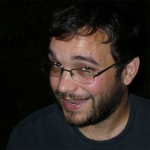 Marc yn ddylunydd gweledol a creawdwr WordPress sy’n rhedeg ei gwmni dylunio ei hun yma yng Nghaerdydd. Yn ein barn ni, fe yw’r ‘wrangler’ WordPress gorau yn y ddinas, yn ogystal â bod yn math arbennig a phrin o dylunydd gweledol sydd yn wir yn deall y we ac yn gwybod sut i adeiladu profiadau defnyddwyr gwych arno. Rydym yn gwahodd Marc yn rheolaidd ar brosiectau NativeHQ technegol sydd angen ychydig o arbenigedd ychwanegol a meddwl dylunio, er enghraifft ein gwefan mapio diweddar i Gwmni Theatr Forest Forge
Marc yn ddylunydd gweledol a creawdwr WordPress sy’n rhedeg ei gwmni dylunio ei hun yma yng Nghaerdydd. Yn ein barn ni, fe yw’r ‘wrangler’ WordPress gorau yn y ddinas, yn ogystal â bod yn math arbennig a phrin o dylunydd gweledol sydd yn wir yn deall y we ac yn gwybod sut i adeiladu profiadau defnyddwyr gwych arno. Rydym yn gwahodd Marc yn rheolaidd ar brosiectau NativeHQ technegol sydd angen ychydig o arbenigedd ychwanegol a meddwl dylunio, er enghraifft ein gwefan mapio diweddar i Gwmni Theatr Forest Forge
Mae dealltwriaeth Marc o’r we a chyfathrebu gweledol yn wych ac sy’n cryfhau gallu technegol ein tîm, ac mae’n mwynhau heriau ychwanegol yr ydym yn cynnig iddo fe. Mae hefyd yn werth dilyn ar Twitter, lle mae e’n rhannu o’r hyn mae wedi bod yn gwrando ar yn ddiweddar, i’r fframweithiau cwl diweddaraf ar y we a driciau WordPress ac ategion ei fod wedi darganfod.
Rydym wedi diweddaru’r tudalen Ein Tîm ar ein gwefan gyda’n ychwanegiadau newydd ac yn edrych ymlaen at lawer o flynyddoedd cynhyrchiol yn gweithio gyda Kelly a Marc – croeso i NativeHQ!
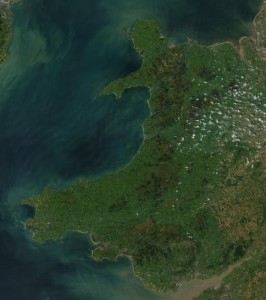
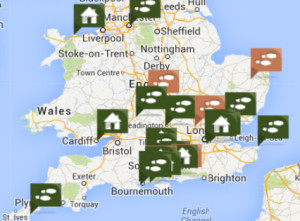

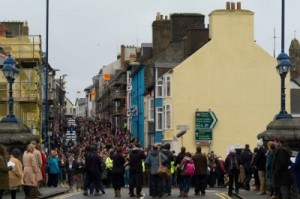
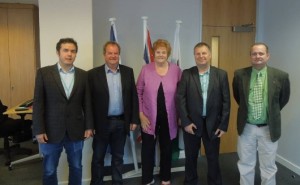
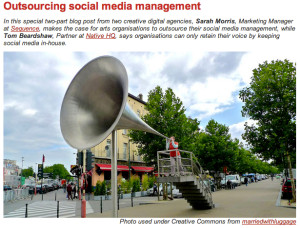
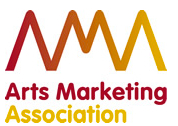
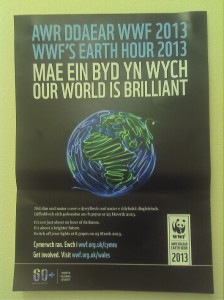
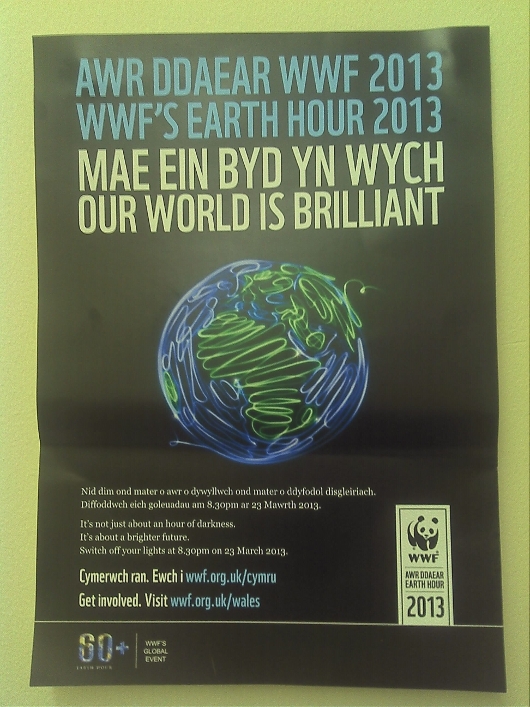
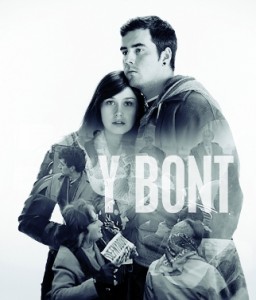
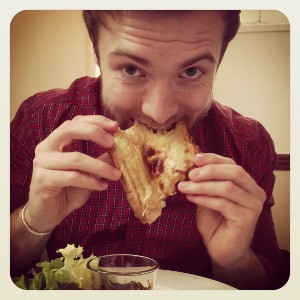
National Assembly for Wales announces digital engagement plans
‘Democratic deficit’ is the term that Mrs Butler applied to the problem of many UK and Welsh media organisations failing to properly cover the work of the Assembly and the public policy differences in Wales as a result of devolution.
For example, viewers of television news in Wales regularly find themselves watching stories involving the English Education Minister Michael Gove, when it is in fact Huw Lewis, the Minister for Education in Wales, who makes policies affecting the education system in Wales.
In her speech, Mrs Butler announced a set of specific measures the National Assembly will take to improve how the Assembly communicates its work with the people of Wales including,
NativeHQ welcomes these announcements. They will make a significant contribution to the way that the work of the Assembly is communicated to the people of Wales. We have been involved in the discussions the Assembly has held about these issues over recent months – you can view a video of Carl Morris contributing to the discussions on our blog.
The key to the success of these initiatives will lie in the way that they are implemented. Some of this is already underway. The flagship Pierhead building in Cardiff Bay, where the Presiding officer made her remarks, has finally been given internet connectivity, which the public can use via wifi, and it is good to hear there will be better communications facilities across the Senedd estate.
NativeHQ will itself be involved in the effort to inform Assembly Members about the best ways to use digital communications tools as one of the organisations chosen to deliver training in digital and social media to AMs and their political staff. We’d welcome comments from our blog visitors if you have any thoughts about the key skills that Assembly Members need to know in order to become more effective using digital tools. What do Welsh politicans need to know about the social web?
The proposal to ‘make the Assembly’s data more open and accessible; opens up the exciting possibility of allowing journalists and citizens to analyse the data in new and innovative ways that could provide fresh insights to help the Assembly to do the important work of representing the interests of Wales and its people, making laws for Wales, and holding the Welsh Government to account. It will be important for the Assembly to work with industry leaders in the field of digital democratic engagement such as MySociety as well as local Welsh technology companies who understand the specific nature of the Welsh political landscape.
The idea of creating a journalism hub within the Senedd for niche digital publishers to engage with the work of the political community is a promising one, though not without its challenges for the Assembly. We would suggest that the Assembly guards against over-reliance on the idea of ‘hyperlocal’, as not all niches are geographic. While hyperlocal sites are an increasing feature of the digital landscape in Wales, many digital publishers focus not on an area of the map, but on an area of policy. For example YnniCymru is a blog which looks at the specific topic of renewable energy, right across Wales.
These topic and hyperlocal specialists are savvy digital users, so we’d suggest that the Assembly looks to create an information resource with smart filtering and notification systems that they can use to ensure that any Assembly activity relating to the area of information that they focus on – be that geographical or topic based – gets to them quickly.
Image by Capt Gorgeous (Creative Commons BY licence)